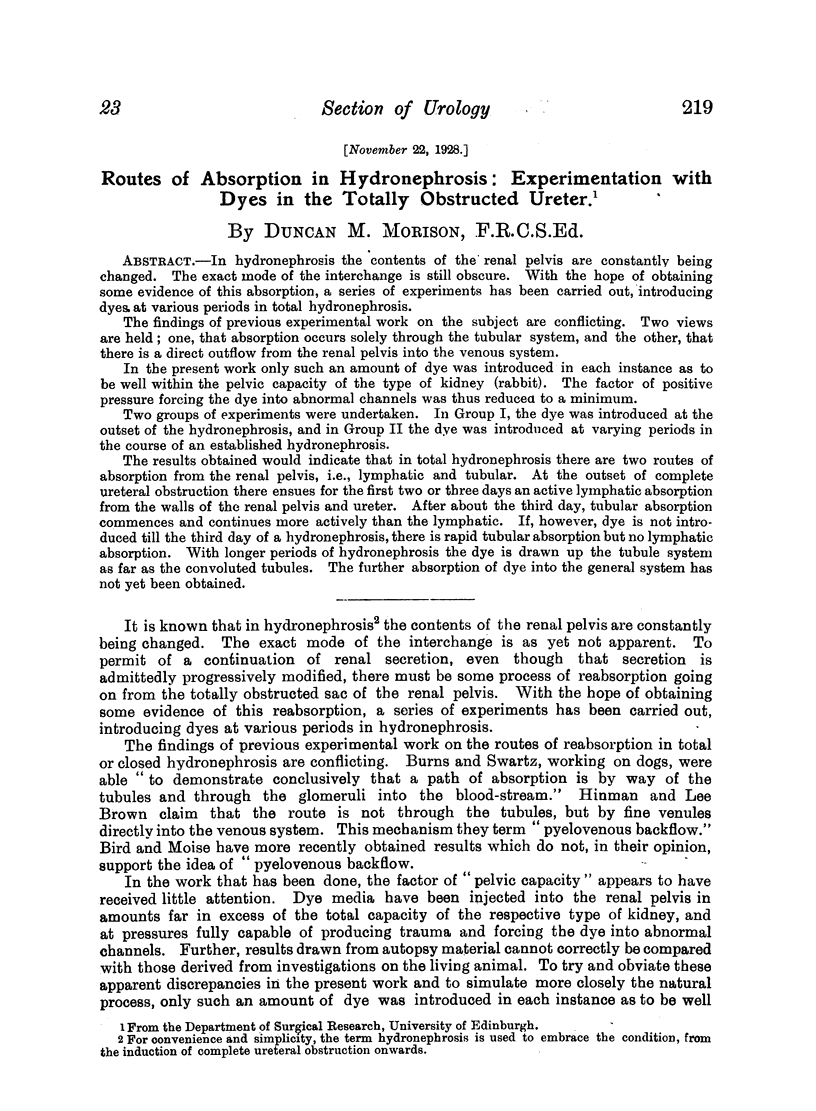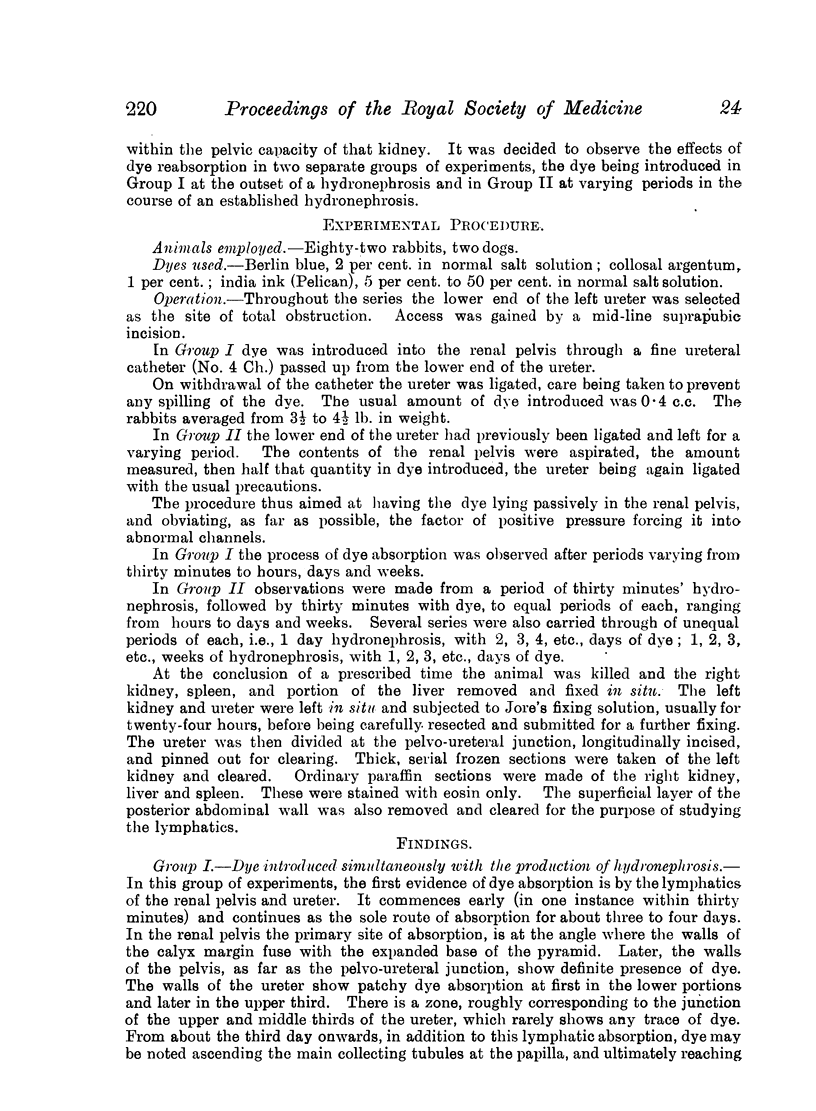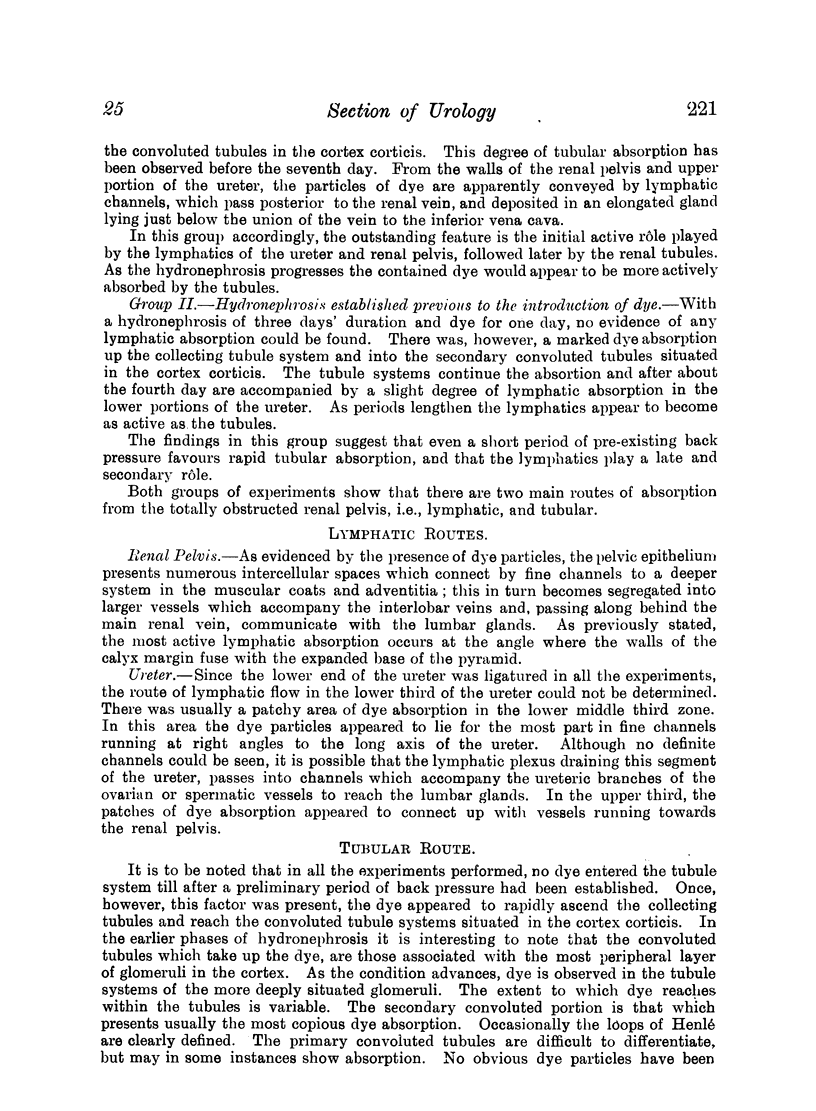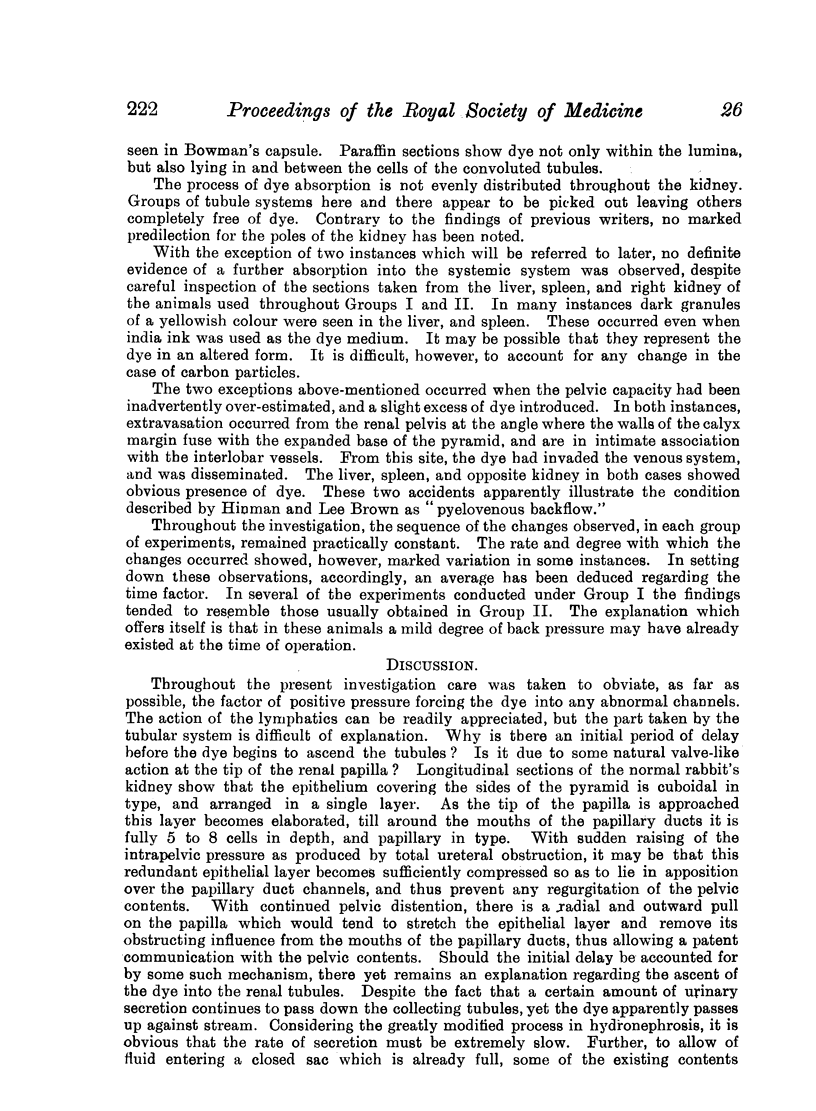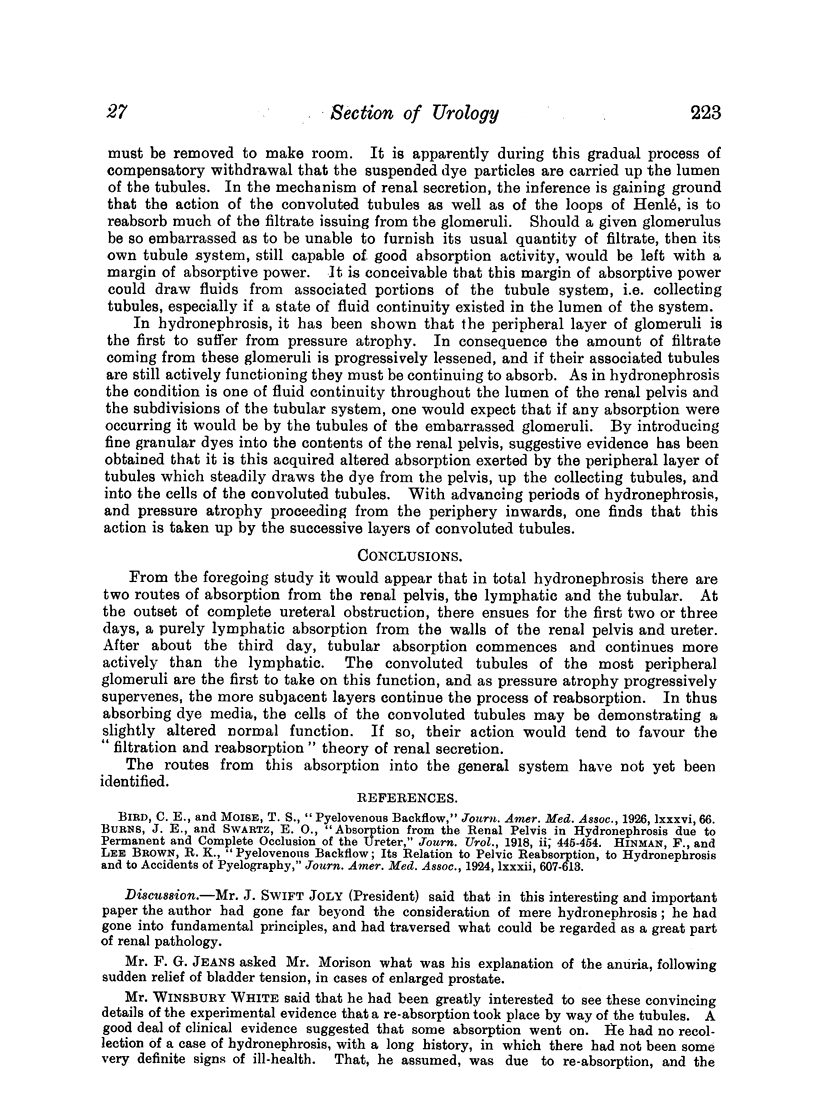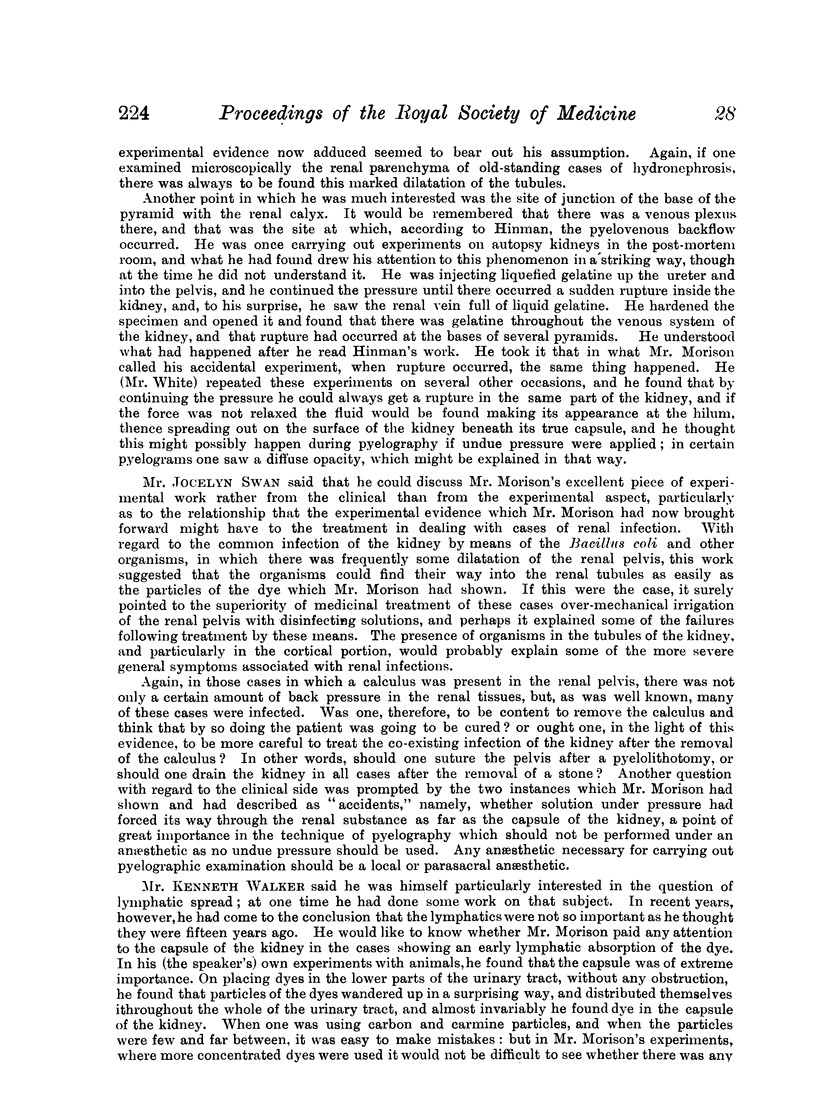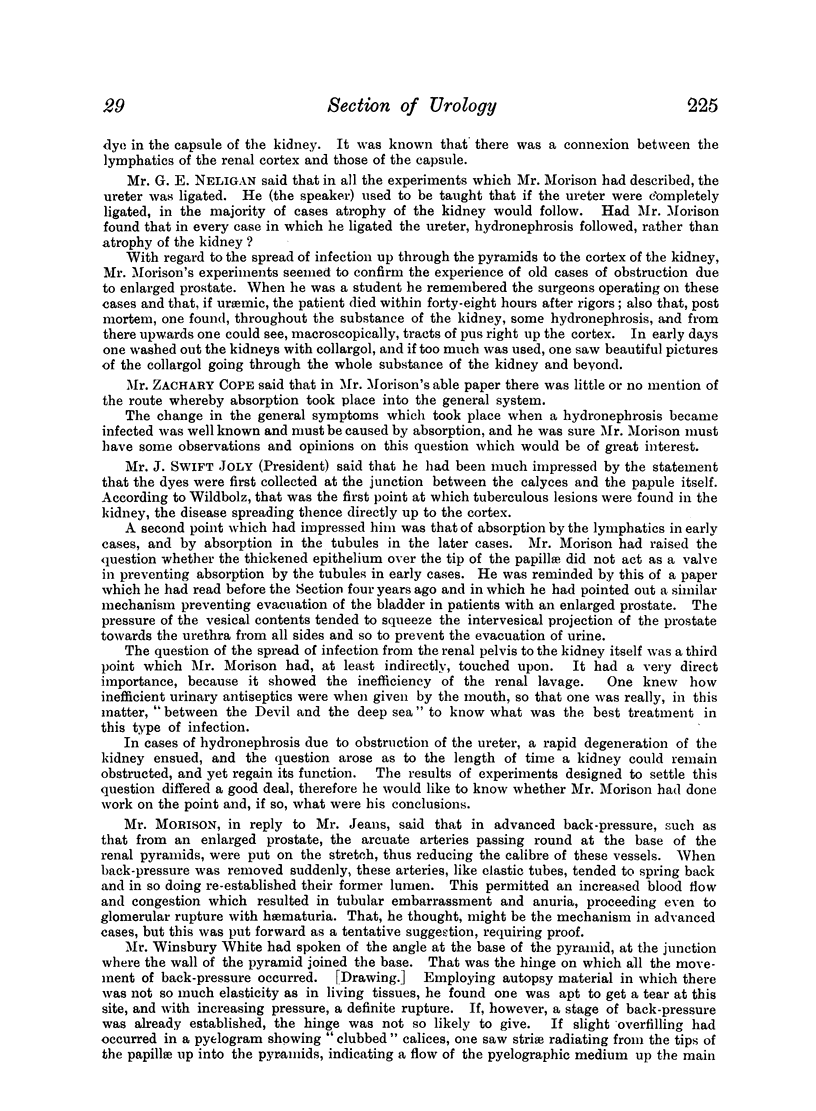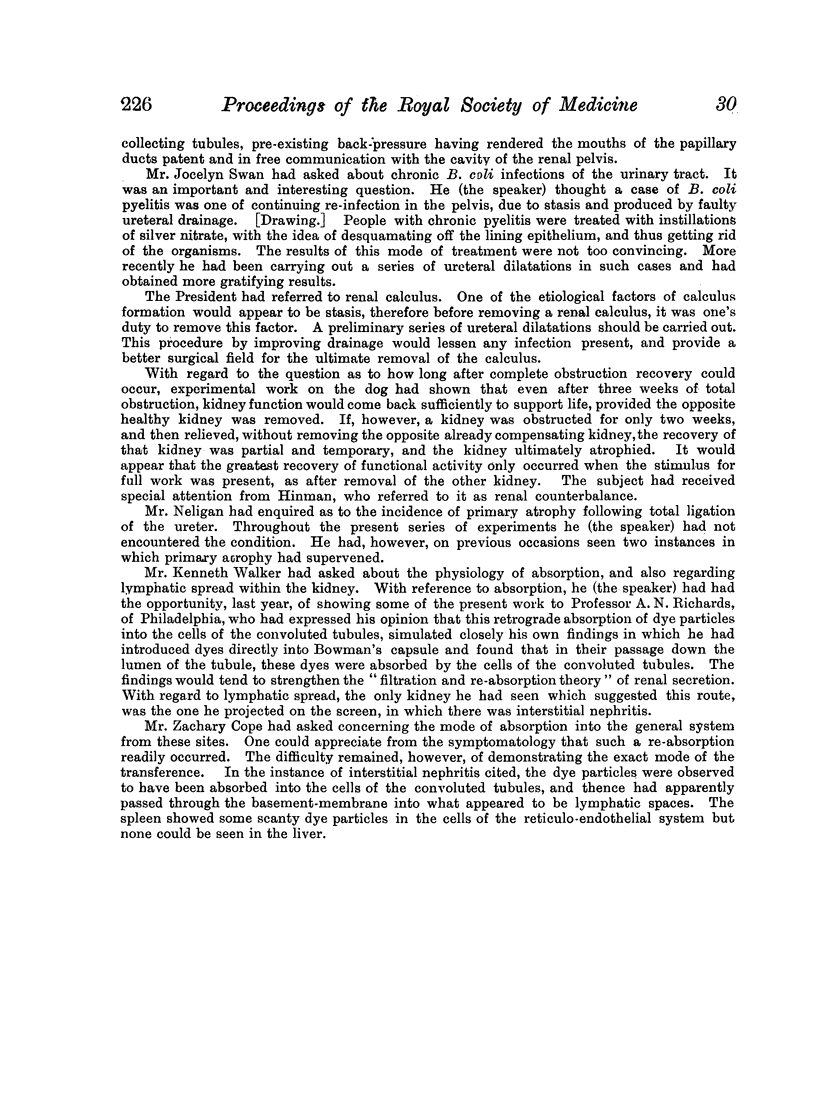Abstract
In hydronephrosis the contents of the renal pelvis are constantly being changed. The exact mode of the interchange is still obscure. With the hope of obtaining some evidence of this absorption, a series of experiments has been carried out, introducing dyes at various periods in total hydronephrosis.
The findings of previous experimental work on the subject are conflicting. Two views are held; one, that absorption occurs solely through the tubular system, and the other, that there is a direct outflow from the renal pelvis into the venous system.
In the present work only such an amount of dye was introduced in each instance as to be well within the pelvic capacity of the type of kidney (rabbit). The factor of positive pressure forcing the dye into abnormal channels was thus reduced to a minimum.
Two groups of experiments were undertaken. In Group I, the dye was introduced at the outset of the hydronephrosis, and in Group II the dye was introduced at varying periods in the course of an established hydronephrosis.
The results obtained would indicate that in total hydronephrosis there are two routes of absorption from the renal pelvis, i.e., lymphatic and tubular. At the outset of complete ureteral obstruction there ensues for the first two or three days an active lymphatic absorption from the walls of the renal pelvis and ureter. After about the third day, tubular absorption commences and continues more actively than the lymphatic. If, however, dye is not introduced till the third day of a hydronephrosis, there is rapid tubular absorption but no lymphatic absorption. With longer periods of hydronephrosis the dye is drawn up the tubule system as far as the convoluted tubules. The further absorption of dye into the general system has not yet been obtained.
Full text
PDF